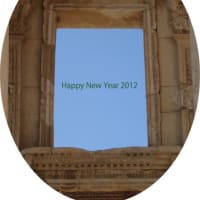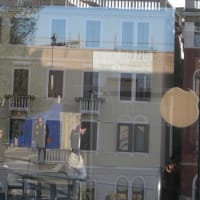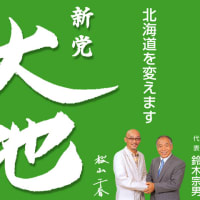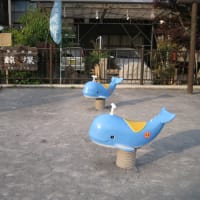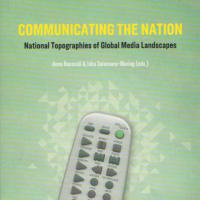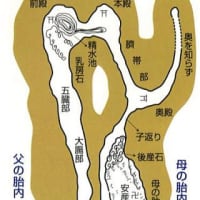もう一月も前になるが、アメリカの新聞、ファイナンシャル・タイムズから中国現代美術に関するインタビューを受けた。その記事が記者のデボラ・ブルースターさんから送られてきたので、コピペします。私も2箇所に登場します。興味のある方はどうぞ。ではでは。
Freedom from Beijing's hold
Deborah Brewster
FT.com site; Apr 07, 2006
Xiaoming Zhang, the first specialist in Chinese contemporary art at Sotheby's in New York, can't keep up. "This market is so hot right now," she says. "As soon as I've finished the paperwork on any new piece that comes in, it's gone."
Zhang, who was appointed in January, presided over the auction house's first New York sale of contemporary Asian art last month, comprising works from China, Japan and Korea. The 250-lot sale, which was mostly Chinese works, was 90 per cent sold and pulled in $13.2m in total almost twice the estimate.
The Chinese art market along with the Indian and Korean markets is enjoying a boom, especially in contemporary art. Collectors, both Chinese and western, are paying prices that would have been inconceivable only a few years ago.
The Sotheby's sale in New York followed three successfulHong Kong contemporary sales by the auction house, resulting in the decision to bring the works to the world's biggest market. Christie's, which claims more Asian sales than Sotheby's, sold $22m of Chinese contemporary art works at its highly successful sale in November. It says its global Asian art sales last year rose by 45 per cent to $336m. Eric Chang, head of the Christie's Chinese and Asian art department in Hong Kong, expects Asian art sales to rise six or seven times within the next five years. And Bonham's plans its first contemporary Asian art sale in London in June.
Works by Chinese contemporary artists in particular have risen in price by more than 200 per cent in the past two years, according to an index based on 80 artists compiled by the market tracker Artprice.com.
Shinya Watanabe, the gallery manager at Ethan Cohen Fine Arts, a US pioneer of Chinese contemporary art, says: "Asian contemporary art is very strong but China is the market that is growing the most."
With art increasingly viewed as an asset class, there is a new emphasis on such works as investments. Artso.net, a Chinese website, tracks sales of Chinese artists' works and the prices at which they sell in a style similar to tracking the stockmarket. The first seminar devoted to art as an investment in South Korea was held in Seoul last month. Philip Hoffman, who runs the Fine Art fund, told those attending that he plans to open a second fund investing in Asian art markets.
Is this a fad or the start of a significant trend? Even ardent supporters of Chinese art believe there is an element of speculation, especially on the mainland. The Artprice index shows a fairly volatile market over the past decade, with a 40 per cent jump in prices between 1996 and 1997 followed by a slump until two years ago.
But there are also strong underlying factors supporting the development of this market. Museums and curators started buying in the past few years an important development which helps underpin sales and also brings the works to a wider public. Asian governments have shifted their stance and are funding art museums for Asian art the Chinese government funded the first China pavilion at last year's Venice Biennale while private museums are also springing up. The western auction houses began selling contemporary Chinese works in 2000.
Buying is fairly evenly spread, with wealthy Chinese entrepreneurs and business people buying Chinese art, as well as westerners. "Before 2000, American collectors were not interested in Chinese contemporary art, either coming to a show or buying," says Watanabe. "That was the year things started to change. P.S.1 [New York's contemporary art space] had a big show of Chinese contemporary art and things have been changing since."
Vinci Chang, a 20th-century Chinese art specialist at Christie's in Hong Kong, says: "The market is just beginning. Many people are interested but are still educating themselves about who the artists are and how to understand the art. This is a transition period.ost of the artists are young and in the next five to 10 years we will see who is left, who has a true body of work."
Rigorous art academy training means Chinese artists boast a high degree of technical mastery. The art remains heavily influenced by history and politics. Following the 1949 Communist revolution works were in a style known as social realism showing scenes of peasants at work, for example or apolitical pictures of animals and scenery. By the late 1970s, after the death of Mao Zedong, artists began to break free and create more conceptual and critical works, leading to schools called political pop and cynical realism. Many artists left after the Tiananmen Square massacre of 1989 and the expatriate artists have been strongly influenced by western trends of abstract expressionism.
There is a distinction between older artists, such as Wu Guanzhong, who are being bought mostly by mainland Chinese, and newer conceptual artists, such as Ai Weiwei, who are more directly influenced by western contemporary art and are being bought especially by expatriate Chinese and western collectors.
Wu, 87, holds the record auction price for a living Chinese artist's work, with his impressionist-style painting of birds selling for $3.7m last November. But the post-1989 works are increasingly most popular with collectors, Chang says. "This group, especially the artists who left China, has the most commercial and academic appeal. Their prices are at a very high level."
Zhang says the subversive cynical realism school of which Yue Minjun and Fang Lijun are examples, often employing bright colours and cartoonlike effects is popular.
Chang says there are also clear differences in taste between mainland Chinese and western collectors, with the former favouring paintings while westerners go for photographs, installations and video works.
Probably the top-selling painter is Zhang Xiaogang, who was born in 1958 and specialises in traditional oil portraits with a conceptual twist. One, "Comrade No 120", a Mao-suited young man with a red patch on his face, was a highlight of the Sotheby's sale. It was estimated to go for $250,000 to $350,000 but sold for almost $1m.
Another highlight was a 2003 work a wooden "Map of China" by Ai Weiwei, who was in exile for many years and is also an architect. The map is made from wood taken from destroyed Chinese temples and constructed in traditional, nail-free Chinese craftsman style. It went for just above its estimate, at $228,000.
For collectors, finding and acquiring the works they want from Chinese artists can be a challenge. Many of the pieces gathered by Zhang for the Sotheby's sale were taken straight from the artists, who often sell directly to collectors. Western auction houses are still unable to operate in China, although local houses are booming.
It is much more common for Chinese works to change hands through private sales, with collectors buying or commissioning direct from the artists. Art in China is still subject to forms of state censorship that make artists nervous about exposing their work to the public attention of an auction. The auction houses actively sell behind the scenes as well as at auction,
In the west, there are still few dealers or galleries showing Chinese contemporary works, although the number is growing.
In China a busy gallery scene is rapidly developing and gaining its own momentum regardless of the level of interest shown by western buyers.
Freedom from Beijing's hold
Deborah Brewster
FT.com site; Apr 07, 2006
Xiaoming Zhang, the first specialist in Chinese contemporary art at Sotheby's in New York, can't keep up. "This market is so hot right now," she says. "As soon as I've finished the paperwork on any new piece that comes in, it's gone."
Zhang, who was appointed in January, presided over the auction house's first New York sale of contemporary Asian art last month, comprising works from China, Japan and Korea. The 250-lot sale, which was mostly Chinese works, was 90 per cent sold and pulled in $13.2m in total almost twice the estimate.
The Chinese art market along with the Indian and Korean markets is enjoying a boom, especially in contemporary art. Collectors, both Chinese and western, are paying prices that would have been inconceivable only a few years ago.
The Sotheby's sale in New York followed three successfulHong Kong contemporary sales by the auction house, resulting in the decision to bring the works to the world's biggest market. Christie's, which claims more Asian sales than Sotheby's, sold $22m of Chinese contemporary art works at its highly successful sale in November. It says its global Asian art sales last year rose by 45 per cent to $336m. Eric Chang, head of the Christie's Chinese and Asian art department in Hong Kong, expects Asian art sales to rise six or seven times within the next five years. And Bonham's plans its first contemporary Asian art sale in London in June.
Works by Chinese contemporary artists in particular have risen in price by more than 200 per cent in the past two years, according to an index based on 80 artists compiled by the market tracker Artprice.com.
Shinya Watanabe, the gallery manager at Ethan Cohen Fine Arts, a US pioneer of Chinese contemporary art, says: "Asian contemporary art is very strong but China is the market that is growing the most."
With art increasingly viewed as an asset class, there is a new emphasis on such works as investments. Artso.net, a Chinese website, tracks sales of Chinese artists' works and the prices at which they sell in a style similar to tracking the stockmarket. The first seminar devoted to art as an investment in South Korea was held in Seoul last month. Philip Hoffman, who runs the Fine Art fund, told those attending that he plans to open a second fund investing in Asian art markets.
Is this a fad or the start of a significant trend? Even ardent supporters of Chinese art believe there is an element of speculation, especially on the mainland. The Artprice index shows a fairly volatile market over the past decade, with a 40 per cent jump in prices between 1996 and 1997 followed by a slump until two years ago.
But there are also strong underlying factors supporting the development of this market. Museums and curators started buying in the past few years an important development which helps underpin sales and also brings the works to a wider public. Asian governments have shifted their stance and are funding art museums for Asian art the Chinese government funded the first China pavilion at last year's Venice Biennale while private museums are also springing up. The western auction houses began selling contemporary Chinese works in 2000.
Buying is fairly evenly spread, with wealthy Chinese entrepreneurs and business people buying Chinese art, as well as westerners. "Before 2000, American collectors were not interested in Chinese contemporary art, either coming to a show or buying," says Watanabe. "That was the year things started to change. P.S.1 [New York's contemporary art space] had a big show of Chinese contemporary art and things have been changing since."
Vinci Chang, a 20th-century Chinese art specialist at Christie's in Hong Kong, says: "The market is just beginning. Many people are interested but are still educating themselves about who the artists are and how to understand the art. This is a transition period.ost of the artists are young and in the next five to 10 years we will see who is left, who has a true body of work."
Rigorous art academy training means Chinese artists boast a high degree of technical mastery. The art remains heavily influenced by history and politics. Following the 1949 Communist revolution works were in a style known as social realism showing scenes of peasants at work, for example or apolitical pictures of animals and scenery. By the late 1970s, after the death of Mao Zedong, artists began to break free and create more conceptual and critical works, leading to schools called political pop and cynical realism. Many artists left after the Tiananmen Square massacre of 1989 and the expatriate artists have been strongly influenced by western trends of abstract expressionism.
There is a distinction between older artists, such as Wu Guanzhong, who are being bought mostly by mainland Chinese, and newer conceptual artists, such as Ai Weiwei, who are more directly influenced by western contemporary art and are being bought especially by expatriate Chinese and western collectors.
Wu, 87, holds the record auction price for a living Chinese artist's work, with his impressionist-style painting of birds selling for $3.7m last November. But the post-1989 works are increasingly most popular with collectors, Chang says. "This group, especially the artists who left China, has the most commercial and academic appeal. Their prices are at a very high level."
Zhang says the subversive cynical realism school of which Yue Minjun and Fang Lijun are examples, often employing bright colours and cartoonlike effects is popular.
Chang says there are also clear differences in taste between mainland Chinese and western collectors, with the former favouring paintings while westerners go for photographs, installations and video works.
Probably the top-selling painter is Zhang Xiaogang, who was born in 1958 and specialises in traditional oil portraits with a conceptual twist. One, "Comrade No 120", a Mao-suited young man with a red patch on his face, was a highlight of the Sotheby's sale. It was estimated to go for $250,000 to $350,000 but sold for almost $1m.
Another highlight was a 2003 work a wooden "Map of China" by Ai Weiwei, who was in exile for many years and is also an architect. The map is made from wood taken from destroyed Chinese temples and constructed in traditional, nail-free Chinese craftsman style. It went for just above its estimate, at $228,000.
For collectors, finding and acquiring the works they want from Chinese artists can be a challenge. Many of the pieces gathered by Zhang for the Sotheby's sale were taken straight from the artists, who often sell directly to collectors. Western auction houses are still unable to operate in China, although local houses are booming.
It is much more common for Chinese works to change hands through private sales, with collectors buying or commissioning direct from the artists. Art in China is still subject to forms of state censorship that make artists nervous about exposing their work to the public attention of an auction. The auction houses actively sell behind the scenes as well as at auction,
In the west, there are still few dealers or galleries showing Chinese contemporary works, although the number is growing.
In China a busy gallery scene is rapidly developing and gaining its own momentum regardless of the level of interest shown by western buyers.










